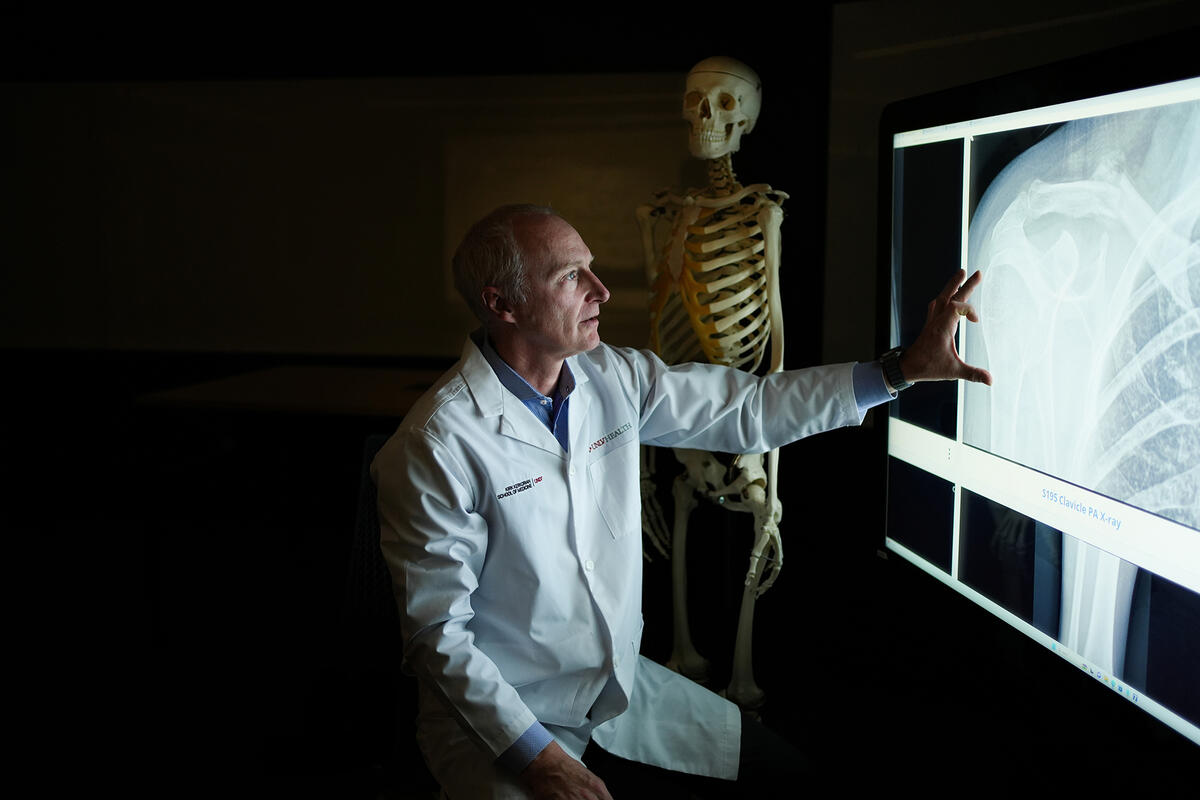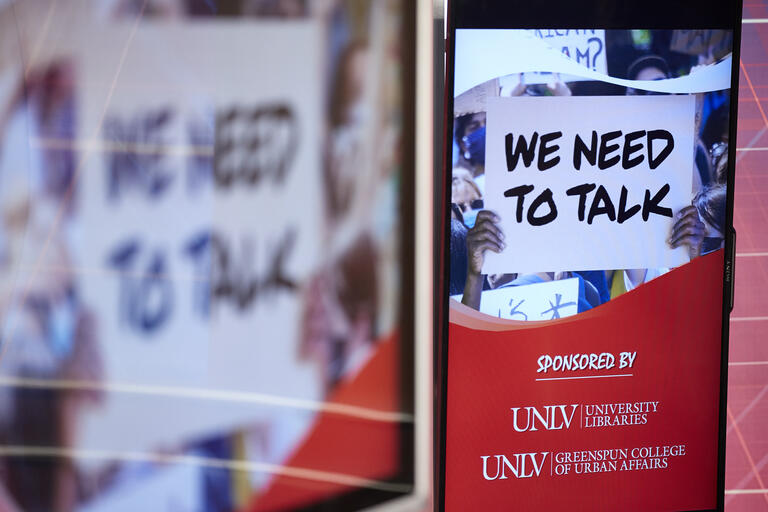At first, it may not appear obvious to see the connection from growing up in a small fishing town in Alaska to becoming the Optum and Dr. Tony and Renee Marlon Endowed Chair in the Department of Orthopaedics at the Kirk Kerkorian School of Medicine at UNLV and the University Medical Center of Southern Nevada’s chief of orthopaedic surgery. But, Erik Kubiak, MD, notes that the two things are inextricably linked.
“My world was that … mechanical and fixing things and putting things together,” says Dr. Kubiak. “My background is from that fishing world. So, when I went to medical school, the things that resonated with me were the things that were mechanical … were surgical things and in the surgical subspecialties. Orthopaedic surgery was probably the thing that most complemented my childhood and the things I already knew.”
Beyond that, his passions played their part. “That’s why people who come from athletic backgrounds are drawn to orthopaedics also, because it makes sense. You want to understand why things perform the way they do. My climbing background and my running background … those things were a pathway to understand why things work the way they work,” he says.
As he went through his residency, the mentors he aligned with were academic mentors who devoted their lives to teaching. He never thought of doing anything but teaching after that. “The expectation is, if you want to do this thing at this level, you have to teach,” he says. “If you’re going to really embrace a life of learning or a life of continued progression, I would call it, the place to do that is in this world … in the academic world.”
With extensive experience in orthopaedic trauma and as an adult reconstructive surgeon, Kubiak has acted as a principal investigator or co-principal investigator on numerous clinical and research studies, including a Department of Defense (DOD) grant.
“The DOD grant was specifically looking at a way to quantify, objectively, the behavior of people after they sustained fractures in their lower extremities … The suspicion always has been, people do what doesn’t hurt … so, we basically went down this pathway of trying to, in a stealth fashion so patients didn’t know, monitor what loads their limbs were actually experiencing during the fracture zone period,” Kubiak says. “That drove far enough down the road that I became quite convinced that there were better markers for behavior than simply measuring load. In the end, it turned out that just step number (as measured on a smart phone exercise app) was a better predictor of fracture progression healing and my suspicion is that the further a person’s phone goes in a period of time is maybe the best indicator of all.”
Those old, long-held beliefs that you need to stay off a fractured limb for months turned out to be just plain wrong.
“If your limb doesn’t hurt and you put some weight on it, it’s not going to cause any problems and actually, if you don’t put any weight on it because you’re afraid, then it won’t heal that fast,” says Kubiak. “... Now, we’re pretty accepting that if you’re over 65 and you break your femur, we let you walk on it. If you break your tibia, we let you walk on it and we work on building implant constructs that will facilitate people’s immediate weight bearing because the consequences of telling them they have to sit down for three months are so negative in comparison.”
With a storied career behind him, he believes the future of orthopaedics is to become more holistic, to the benefit of patients.
“The most impactful important thing that will be happening inside this world is that orthopaedics becomes less myopic and understanding that it really is musculoskeletal health,” he says. “Integration of not just surgeon providers, but all those other pieces of what it is to be healthy from a musculoskeletal perspective and live well through your life. I think it’s the integration of sports medicine and orthopaedic surgery and wellness … that’s not just fixing a ligament or putting a rod in a bone. That’s really understanding, in a comprehensive way, what it is to take care of that person. And, bringing together nutrition, diet, and endocrinology, and the craft of fixing broken things all together in one house, so that when people seek care, that care isn’t fragmented. That care is integrated. That is a hard project, but that’s a worthy project.”
Above all, though, he is proud of the progress the school has made in such a short time.
“One of the things that’s amazing about the program and the school is that the school has done a really good job of preparing their medical students for residency,” says Kubiak. “... We saw the top picks coming out of UNLV at really well-regarded programs. That’s an excellent reflection on a medical school, especially one that is not very old. To brag about our people, we’ve been very proud of our people doing competitive fellowships and many, if not all of them, coming back to practice in the southwest quadrant of the United States. And, many of them coming back to practice in Las Vegas meets the governor’s goals and the legislature’s goals of addressing the shortage of physicians in this population. I’m happy that we’re an integral part of that.”



